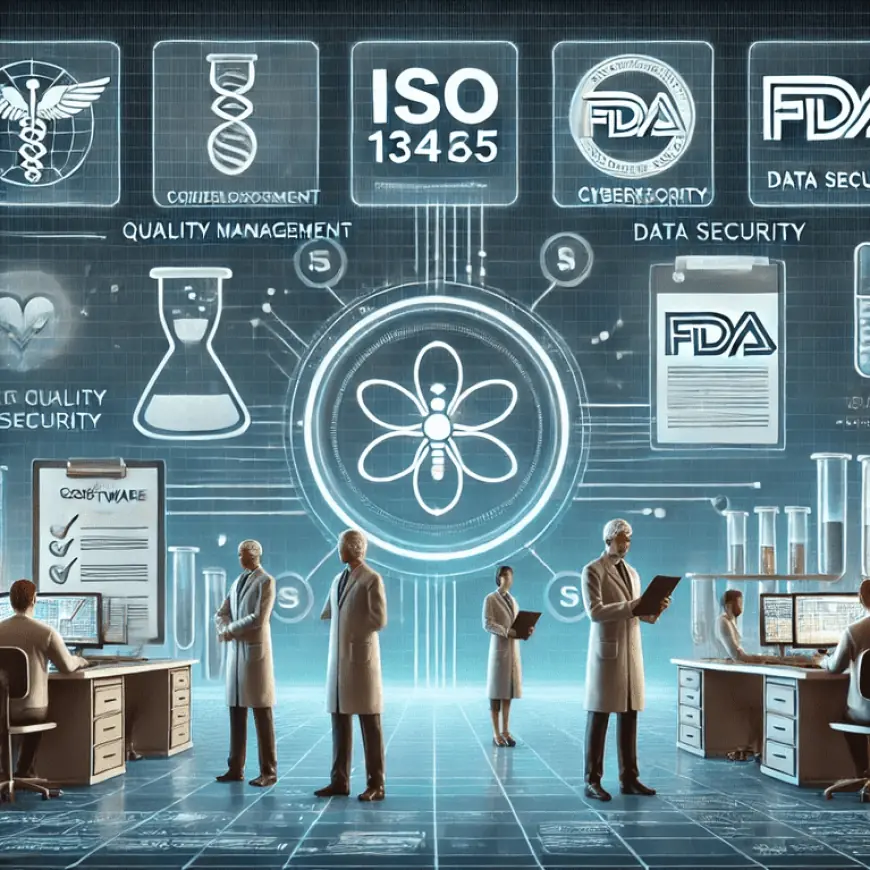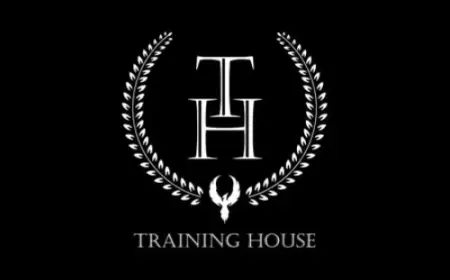ISO 13485 for Medical Software: What Developers Must Know
ISO 13485 certification verifies that a medical device manufacturing company has implemented a quality management system to ensure the safety medical devices.

The Reality Check: Medical Software Isn't Just Software
If you're building a fitness tracker app or a meal-planning tool, you have plenty of freedom. Push an update, fix a few bugs, roll out a new feature—no problem. But if you're developing medical software? Different ball game.
Medical devices—including software that acts as or supports them—are subject to strict safety and quality requirements. And while ISO 13485 may not be legally mandated everywhere, it’s practically a golden ticket in the industry.
Let’s break it down—what ISO 13485 actually means for medical software developers, why it’s worth the effort, and how to navigate the certification process without losing your sanity.
ISO 13485: The What, The Why, and The ‘Do I Really Need This?’
ISO 13485 is a quality management system (QMS) standard specifically designed for medical devices. Even if your software isn’t a physical device, it still falls under the same scrutiny if it has any medical application.
Think of it like this: If your software can affect patient care, diagnosis, or treatment in any way, regulators (and your future customers) want proof that you’ve built it with safety, consistency, and risk management in mind.
But Isn’t That Just ISO 9001 with Extra Steps?
Not quite. ISO 9001 is the general-purpose QMS standard, but ISO 13485 takes things further by emphasizing:
-
Risk management from start to finish – No ‘fix it later’ approach. Every stage of development needs built-in safety measures.
-
Documentation that regulators (and auditors) love – Everything from requirements to testing must be traceable and repeatable.
-
A strict focus on patient safety and regulatory compliance – No cutting corners when it comes to reliability and performance.
In short, ISO 13485 isn’t just about quality—it’s about proving your software won’t fail when it matters most.
So, Who Actually Needs ISO 13485?
If your software does any of the following, you’re in the hot seat:
-
Directly controls a medical device – Think pacemaker firmware, insulin pump software, or robotic surgery systems.
-
Supports clinical decision-making – AI-driven diagnostics, imaging software, and drug interaction checkers fall here.
-
Manages patient data in a regulated medical setting – EHRs, telemedicine platforms, or anything integrating with hospitals.
Still not sure? Here’s a quick gut check: If a failure in your software could lead to injury, misdiagnosis, or compromised patient care, ISO 13485 is probably in your future.
The Certification Journey: More of a Marathon Than a Sprint
Unlike some software certifications, you don’t just ‘get’ ISO 13485 by filling out a form. It’s a process—a structured, deliberate one that involves:
1. Understanding What Needs to Change
If you’re already following solid software development best practices, you might be halfway there. But ISO 13485 demands a shift in mindset. It’s about:
-
Documenting everything – Every feature, update, and change needs a paper trail.
-
Building in risk management from day one – No waiting until the testing phase to think about failure modes.
-
Thinking long-term – You’re responsible not just for the initial release but for maintenance, updates, and even end-of-life procedures.
2. Developing (or Overhauling) Your QMS
Your QMS is the backbone of your certification. For a software company, this means:
-
Version control that’s more than just Git commits – Every update must be documented with rationale, testing, and approvals.
-
Traceability from requirements to testing – You need to prove that what you built matches what you planned.
-
Defined roles and responsibilities – Even in a startup, there needs to be clear accountability for compliance.
3. Internal Audits: Catching Problems Before the Real Audit
Before you even think about getting certified, you’ll need an internal audit to:
-
Identify gaps – Where does your process fall short of ISO 13485?
-
Test your documentation – If an auditor asked for proof of risk assessment, could you find it?
-
Ensure team readiness – Everyone should understand their role in compliance.
4. The External Audit: The Moment of Truth
A certification body will come in and scrutinize everything—your processes, your documentation, and even your team’s knowledge of the QMS. If you pass, congratulations! If not, you’ll get a list of nonconformities to fix before reapplying.
What Changes in Software Development Under ISO 13485?
You can’t just ‘code first, ask questions later’ in medical software. Here’s what shifts when you develop under this standard:
1. More Rigorous Risk Management
No one likes thinking about worst-case scenarios, but in medical software, it’s non-negotiable. Every feature must be analyzed for:
-
Potential failure points – What happens if this calculation is wrong?
-
Mitigation strategies – How do we prevent or catch errors before they impact users?
-
Impact on patient safety – Could this bug cause harm?
2. More Documentation (Yes, Really)
If you’re used to fast-paced, agile development, this might be a shock. Every step—requirements, coding, testing, deployment—needs records. That means:
-
Requirements traceability – Show that what you built matches what was planned.
-
Verification & validation evidence – Prove that it works as intended under all conditions.
-
Change management logs – Document every update, bug fix, or modification with justification.
3. A Controlled Approach to Updates
You can’t just roll out a quick bug fix whenever you want. Any change must be:
-
Assessed for risk – Could this update introduce new failures?
-
Validated before deployment – Testing isn’t optional, even for minor changes.
-
Documented thoroughly – Auditors will want to see why the change was necessary.
Why This Actually Helps (Even If It Feels Like a Hassle)
Yes, compliance can feel like a lot. But here’s the upside:
-
Fewer legal headaches – Avoid lawsuits and regulatory roadblocks.
-
Easier market access – Many hospitals and medical companies require ISO 13485 certification before considering your software.
-
More investor confidence – Quality and risk management = lower liability.
-
Better software overall – Structured development means fewer bugs and failures.
Final Thoughts: Is It Worth It?
If you’re serious about medical software, ISO 13485 isn’t just worth it—it’s inevitable. It forces you to build with safety and consistency from day one, making your software not just compliant, but genuinely better.
And hey, once you’ve got that certification, you’re playing in the big leagues. Hospitals, medical device manufacturers, and even regulatory agencies will take your software seriously.
So, is it a lot of work? Absolutely. Is it overkill? Not even close.
Ready to get started? Step one: take a hard look at your current development process and see how much of it already aligns. You might be closer than you think.
What's Your Reaction?
 Like
0
Like
0
 Dislike
0
Dislike
0
 Love
0
Love
0
 Funny
0
Funny
0
 Angry
0
Angry
0
 Sad
0
Sad
0
 Wow
0
Wow
0
















































